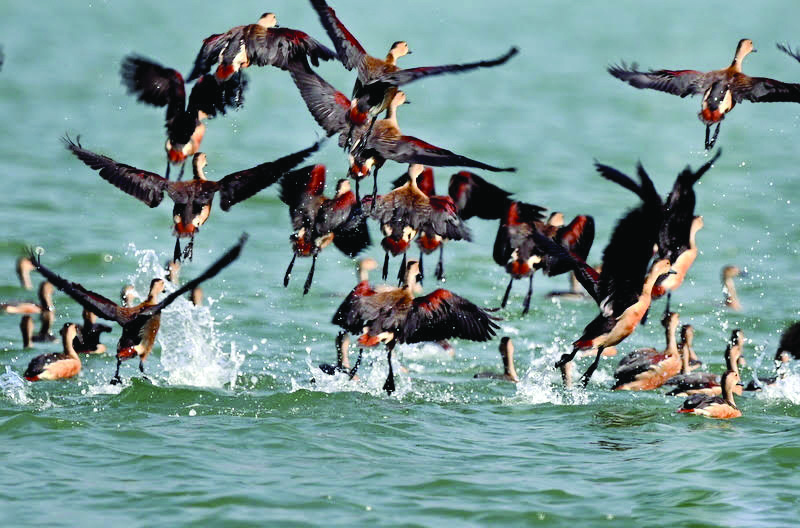Migratory birds flock to the Sunderbans

KOLKATA: The migratory birds have come in large numbers in the Sunderbans and the artificial mangrove cover created by the state Forest department in the recent past has emerged as a favourite haunt of these avians.
Interestingly frequent strikes in the border areas with China and Pakistan have not been a deterrent when it comes to the migration of these winged species.
Thousands of birds from countries like Russia, Australia, Finland, Iran have crossed over seas and oceans to reach the mangrove forest and most of them are aquatic, nocturnal and other birds living close to oceans.
The South 24-Parganas Forest division has deployed extra guards in and around the tourist resorts to ensure that the winged foreign guests are not disturbed.
“We have created an artificial mangrove forest in Sunderbans where there is the availability of food for the birds. This has been responsible for attracting them in large numbers,” Milan Mandal, Divisional Forest Officer (DFO), South 24-Parganas said.
According to ornithologists, 40 different types of migratory birds come to Sunderbans during winter with the temperature in some countries dropping drastically and the biting cold presenting hostile living conditions for the birds. They spend some days here and then fly back to their abode.
This year, islands like Jambudwip, Kalas, Thakuran, Chaimari, Mechua have been inhabited by thousands of migratory birds.
Bhagabatpur, Bakkhali, Ramkar Char in Gangasgar and Matla are also abuzz with the twittering of the winged guests.
According to Prakiti Sansad, a bird watcher organisation that had surveyed migratory birds in Sunderbans last year found Curlew Sandpiper from Siberia, Whimbrel from Finland, Snipe (popularly known as Kadakhocha from China), Plover from Tibet. Apart from these, Ruddy Shelduck, Gadwall, Tufted Dick, Kentish Plover etc were also found.
The organisation has started a survey from January 14 to assess whether any new species of bird has arrived here this year.



